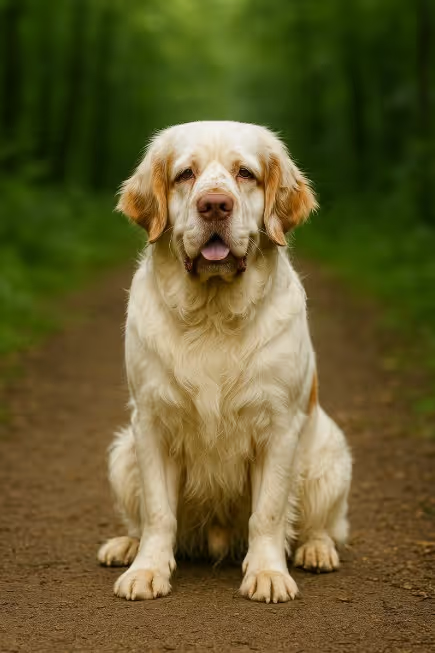The Clumber Spaniel is a gentle, slow-paced sporting dog known for its devotion, loyalty, and dignified presence. Unlike high-energy spaniels, Clumbers are more laid-back, making them excellent family companions for calm homes. If you’re wondering “Are Clumber Spaniels good apartment dogs?”—they can adapt if exercised, but their size makes houses with yards more ideal. “Do Clumber Spaniels shed?”—yes, moderately. “Are Clumber Spaniels hypoallergenic?”—no. These affectionate dogs are steady, dependable, and happiest with owners who enjoy leisurely walks and lots of companionship.

The Clumber Spaniel originated in France and England in the 18th century. Bred as a gundog for flushing and retrieving game in heavy cover, the breed is named after Clumber Park in Nottinghamshire, England, where the Duke of Newcastle helped develop it. Clumbers were prized by nobility, including Prince Albert and King Edward VII, for their steady pace and scenting ability. They were first imported to North America in the mid-19th century and remain a rare but cherished breed.
The Clumber Spaniel is the largest of the spaniels, with a rectangular build and expressive face.
Clumber Spaniels require moderate but consistent grooming.
Though calm indoors, Clumber Spaniels need daily activity to stay fit.
Clumbers are intelligent but can be a bit stubborn. Use patience and consistency.
This breed tends to gain weight easily—feed carefully.
Clumber Spaniels are generally healthy but prone to certain conditions.
As a rare breed, it’s important to seek responsible sources.
Are Clumber Spaniels good apartment dogs?
Yes, they can adapt to apartments if exercised daily, but their size makes houses preferable.
Do Clumber Spaniels shed?
Yes, moderately, with heavier seasonal shedding.
Are Clumber Spaniels hypoallergenic?
No.
How much exercise does a Clumber Spaniel need?
About 45–60 minutes daily, including walks and scent games.
Are Clumber Spaniels good family dogs?
Yes—gentle, affectionate, and tolerant with children.
Do Clumber Spaniels bark a lot?
Not excessively; usually only to alert.
How are Clumber Spaniels different from other spaniels?
They’re heavier, calmer, and more deliberate in pace compared to energetic Cocker or Springer Spaniels.
What health tests should breeders do?
Hips, elbows, eyes, and cardiac screening.
Do Clumber Spaniels drool?
Mildly, especially around mealtimes.